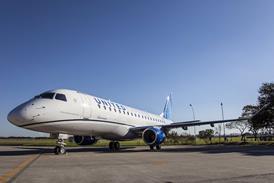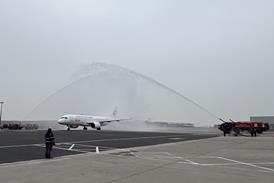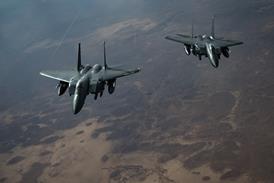Over an epic, three-day journey, Textron Aviation’s Cessna Citation Longitude crossed the Atlantic to make an EBACE static park debut less than two weeks after the fourth flight test vehicle completed its maiden flight in Wichita, Kansas.
The super-midsize jet, flown by engineering test pilot Andrew Peters and senior production test pilot Brian Gigax, is designed to make the crossing from the US east coast non-stop once it enters serial production.
But these are still early days for the programme. It was only seven months ago that the Longitude entered flight tests. As the fourth aircraft – and the first with a full interior – joined the flight test programme on 6 May, the Longitude programme was approaching about 450 flight hours on 230 flights, while on track to complete certification by the end of the year.
With a special airworthiness tag and lacking access to airspace reserved for reduced vertical separation minimum, the Longitude was forced to fly a slightly longer-than-normal route, exceeding the ideal great circle distance by about 300nm for a total of 4,618nm, Textron Aviation says.
Assisted by two more Textron Aviation crew members – avionics technician William Anderson and experimental mechanic Jonathon Eimers – the Longitude’s flight crew set a course for Bangor, Maine. The aircraft cruised initially at Mach 0.82 at 45,000ft, but as fuel burned off the crew reduced power to maintain M0.84, the company says.
The next stop was Keflavik, Iceland, a landing spot 1,358nm from Bangor that was chosen due to uncertainty over the aircraft’s access to the UK-administered North Atlantic High-Level Airspace, Textron Aviation says. A curfew imposed at the Geneva airport forced the crew to overnight in Keflavik. Finally, the crew departed for the final, 1,499nm leg to Geneva on 18 May, during which the Longitude cruised at 479KTAS.
Rob Scholl, Textron Aviation’s senior vice-president of sales and marketing, said: “The design of the aircraft was driven by input from customers around the world, so we’re thrilled to showcase this particular aircraft to our European customers.”
Source: Flight Daily News


























